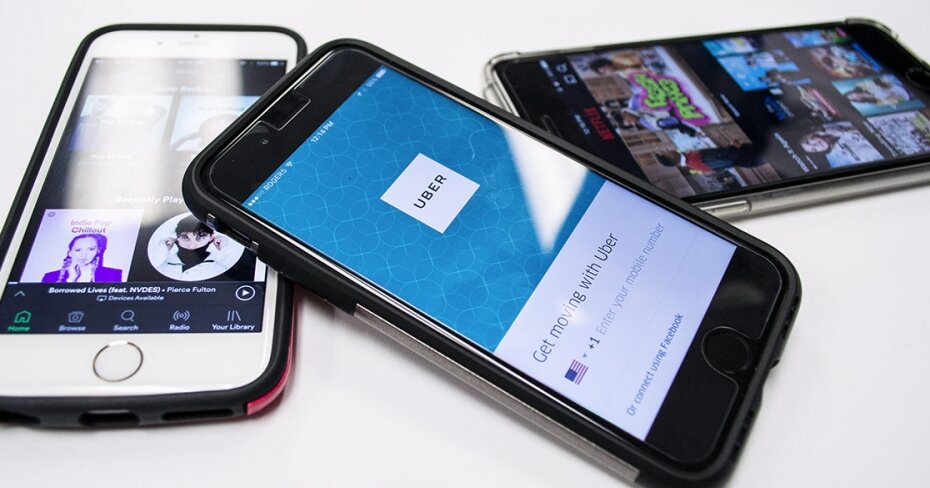Netflix, Uber, Spotify: How big should your digital budget be?
By: Maureen Genore on January 4, 2017
Ten years ago, my credit card statement wouldn’t be filled with charges from companies like Netflix, Uber, Spotify and Amazon Prime.
But all these companies now find cozy spots every month on my bills. That realization really hit me this month as I put the finishing touches on my budget for the year. I pay $11 a month for a Spotify Premium account, $8 a month for Netflix, and have spent more than I care to admit on taking Uber home when I’m just not in the mood to be crammed into a grungy streetcar.
All of these expenses have something in common: they’re digital products or services. And there’s certainly no shortage of ways to spend money in the digital space. These products and services are usually innovative, convenient and unique: things that are becoming especially important in our lives.
So, as more and more ways to spend your money online pop up, it’s got me thinking: how can we keep our budget in check in our increasingly digital world?
You don’t have to use every hot new product
I know, I know. It can be tempting to immediately sign up for every cool new app that you scroll by on Instagram or hear about over brunch. I’ve been there, too. As delicious as they were, I really didn’t need to order ice cream sandwiches from Uber Eats.
Financial planner and author of ‘What Is Your Money Telling You?’, Joe Barbieri, suggests that before you jump on the bandwagon of the newest app or subscription service, make sure you’re thinking about them like you would any other product. Do the benefits outweigh the costs?
Robert Brown, personal finance writer and author of ‘Wealthing Like Rabbits’, agrees.
“Budgeting for a digital product really isn’t any different than budgeting for a traditional product,” he says. “You have to determine how much of your monthly income you can put toward this service and track that spending so you don’t exceed that amount.”
Brown says it’s about “fundamentals first.”
“I have a Spotify Premium account and I love, love, love it,” he says. “But if someone is carrying a balance on their credit card and paying 24.99% interest, they should be skipping the digital newspaper subscriptions, Spotify, Amazon Prime and their ilk until their credit card is completely paid off.”
Of course, these decisions will vary from person to person, but it’s a good rule of thumb to weigh the cost versus benefit before you sign up or start using something — not all digital products will make sense for everyone.
For example, if you really want to find out what all the ‘Stranger Things’ hype is about, but you rarely watch any other movies or TV, you might be better off sharing a Netflix account with a friend rather than getting your own.
Similarly, just because there is such a thing as a shower that you can pre-heat using your phone while you’re still in bed, it doesn’t mean that you need to get one.
Think about how new digital products can replace other things
This is a great thing to keep in mind when it comes to planning your digital budget.
For every new digital service you start paying for, is there something else you can do without? If you get a Netflix account, maybe you can cancel your cable. If you get a Spotify Premium account, you can stop buying albums on iTunes. If you find yourself using Uber often, maybe you can ditch the transit pass, and supplement your Uber rides with a bike.
Another great way for people to save money is by taking advantage of digital banking.
“Banks like EQ and Tangerine are challenging the traditional bricks and mortar model by offering better service (in my humble opinion) at lower prices,” says Brown.
Obviously, this tactic won’t always be applicable, but where you can think about how new things you’re using can replace other products and services.
Be mindful when it comes to ‘free’ trials
Ah, the free trial. I’m sad to admit I’ve fallen victim to signing up for more than a few free trial offers that I subsequently forgot to cancel, and I have a sneaking suspicion that I’m not the only one who’s done so.
For anyone that hasn’t experienced the free trial surprise — typically, the way free trials work is that you might get a month or two of a service for free, and after that you’ll be automatically charged each month until you cancel. It’s not uncommon for many people to forget they signed up in the first place and be charged when the trial ends. Though free trial offers aren’t limited to just digital products or services, they’re certainly common (and the easiest to forget about!) in the digital space.
I’m not saying that free trials are always a bad idea; they’re a great way to try something you’re not sure about. However, if you do decide to sign up for one, make sure you make a note in your calendar prior to the offers’ end date. This will give you the chance to evaluate and allow you time to cancel if you want. And always make sure to read the fine print — sometimes you have to give more than a one-day notice to cancel a subscription.


